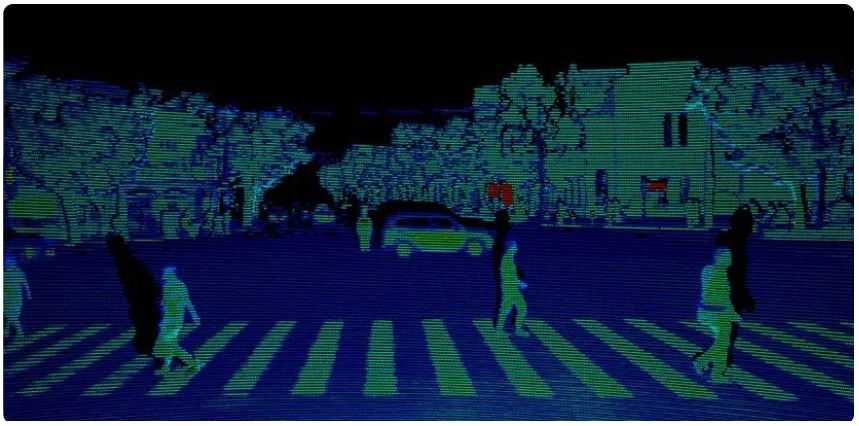
Chinese lidar maker Hesai had a patent infringement claim against it by U.S. lidar maker Ouster terminated, but the case will go on in federal court. (Image: Hesai Group)
The International Trade Commission has terminated a patent infringement suit by an American lidar maker against a Chinese competitor. But the case will continue in federal court.
San Francisco-based Ouster Inc. sued Shanghai-based Hesai Group in April, seeking to bar Hesai from importing certain autonomous vehicle technology to the U.S. The ITC did not address the merits of Ouster’s claim. The ruling lifts a stay on a federal suit Ouster filed in U.S. District Court in Delaware seeking an injunction and monetary damages against Hesai.
The ITC initially determined on Aug. 24 the claim should be terminated. The commission’s final decision came Tuesday.
“Hesai has always believed all of Ouster’s infringement allegations are baseless and lack merit. Hesai’s lidar products are independently developed, based on years of research and engineering investment, not stolen IP,” Hesai Group said in a news release Thursday.
Lidar is an object detection system that works on the principle of radar but uses light from a laser. Hesai is a global leader in the technology. Its customers include autonomous trucking developer Kodiak Robotics.
Ouster seeks freedom from agreement reached by competitor that’s now a subsidiary
The ITC decision allows arbitrators time to decide whether Ouster must arbitrate based on a 2020 patent infringement settlement between Hesai and Velodyne Lidar. Ouster purchased Velodyne in February.
“Hesai has fully abided by the agreement, but Ouster tried to escape its legal obligations,” Hesai said, adding that it welcomes arbitration.
Ouster claimed it was not bound by the previous patent cross-licensing agreement Hesai reached with Velodyne following a suit Velodyne filed in 2019 against Hesai and Suteng Innovation Technology Co. Ltd., also known as RoboSense.
Hesai claims Ouster spent $800,000 lobbying against it in Washington
Hesai agreed to pay Velodyne millions in upfront payments and ongoing royalties. Velodyne sued Ouster alleging patent infringement in June 2022. That case went away when the two startups announced their merger in November.
Hesai claimed Ouster has spent $800,000 since last year on lobbying instead to smear Hesai.
“As a result of its failure to compete effectively in the lidar marketplace against Hesai and its continuing legal setbacks, Ouster is turning to political lobbying as its last resort. Ouster has been availing itself of the political and regulatory avenues by spreading xenophobic misinformation and proffering false claims through its lobbyists and media agents,” Hesai said.
Ouster declined comment on Hesai’s claim about lobbying.
In an Aug. 28 statement following the ITC’s initial determination, Ouster said it invented digital lidar technology and holds one of the largest patent families in the lidar industry. The company claims that after the market shifted toward its digital lidar, Hesai stole Ouster’s patented technologies and incorporated them into Hesai’s competing products.
“The global lidar industry relies on fair competition, and IP [intellectual property] must be protected,” Ouster CEO Angus Pacala said in a statement Thursday. “Lidar is a critical technology used across our nation’s infrastructure from traffic systems to the vehicles we drive. Critical technology needs to be trusted technology. And Ouster is dedicated to promoting the responsible and ethical use of lidar.”
Editor’s note: Updates with Ouster declining comment on lobbying allegation and adds quote from Ouster CEO.
TrendForce 2023 Infrared Sensing Application Market and Branding Strategies
Release: 01 January 2023
Format: PDF
Language: Traditional Chinese / English
Page: 164
|
If you would like to know more details , please contact:
|











